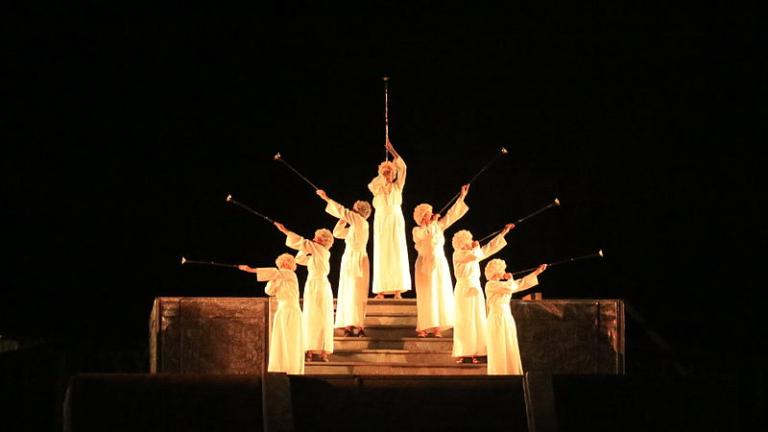
(Wikimedia Commons public domain image)
Here are a trio of interesting items regarding the recent three-part Netflix documentary Murder Among the Mormons:
“Notes on Murder Among the Mormons“
With respect to the latter article, I was just a bit surprised that no Latter-day Saint historians were approached for it who were actually practicing their craft at the time that Hofmann was actively forging, murdering, and standing trial. Although many of the leading historians of that time, nearly forty years ago, have now gone on to their reward, some are very much still around and quite capable of speaking, including two good friends of mine, distinguished historians both, with whom my wife and I participate in a monthly reading group: James B. Allen and Thomas G. Alexander.
I was also surprised, candidly, by Cristina Rosetti’s recommendation of John L. Brooke’s The Refiner’s Fire: The Making of Mormon Cosmology, 1644-1844 as a useful resource for understanding the beliefs of the early Restoration and the matrix from which it emerged. While I’ve long been a fan of Ms. Rosetti’s poetry, I don’t think very highly of The Refiner’s Fire.. See, for example,
(For the “Loftes Tryk” reference in the title of the article to which I’ve just linked, see Daniel C. Peterson, “A Modern Malleus maleficarum.”)
Mark Hofmann was (and may well still be) a genuinely evil man. In a vain attempt to escape his debts and to cover up his forgeries, which were at least partially motivated by a desire to injure the Church of Jesus Christ of Latter-day Saints and to damage or destroy the faith of those who believed in its claims, he murdered innocent people. His first bomb killed Steven Christensen and wounded a secretary. Later on that same day, he deployed a second bomb. Later, in a 1988 hearing before the Utah Board of Pardons, Hofmann indicated that he really hadn’t cared who might have been injured or killed by the second, even if the victim turned out to be a child or a group of children. As it happened, the detonation of the bomb killed a woman named Kathy Sheets. Hofmann told the Board of Pardons that he thought planting the bomb that killed Kathy Sheets was “almost a game . . . at the time I made the bomb, my thoughts were that it didn’t matter if it was Mrs. Sheets, a child, a dog . . . whoever.”
On the following day, a third bomb exploded, seriously injuring Hofmann himself. Relatively soon thereafter, police detectives came to understand that the third explosion had been accidental, that Hofmann himself was the bomber and that he had been planning to use it to kill at least one additional victim — possibly Brent F. Ashworth or even, some have speculated, Elder Dallin H. Oaks of the Council of the Twelve.
After Hofmann’s plea of “guilty” to two counts of second-degree murder, one count of theft by deception, and one count of fraud, and as part of that plea deal, investigators sought his assistance in compiling a list of his forgeries, both of those relating to the history of the Restoration and those pertaining to American history more broadly.
In the course of one of the post-sentencing interviews conducted by police investigators, Hofmann expressed to Michael George his bewilderment at the attention that had been paid to his murder victims:
“I don’t feel anything for them. My philosophy is that they’re dead. They’re not suffering. I think life is basically worthless. They could have died just as easily in a car accident. I don’t believe in God. I don’t believe in an afterlife. They don’t know they’re dead.”
I found that comment stunning when I first read it nearly three and a half decades ago, and very significant. I still do.
(See Robert Lindsey, A Gathering of Saints: A True Story of Money, Murder, and Deceit [New York: Simon and Schuster, 1988], 373-374, 378.)
Relevant here is a passage from the third of the trio of links (“Notes on Murder Among the Mormons,” by Dan Ellsworth) with which I started this blog entry:
“I think this series will cause heartburn among atheists, because Hofmann’s murderous behavior is shown to be explicitly rooted in and rationalized by his atheist worldview. Atheists love to point to examples of how people of faith find in their belief systems the means to justify all kinds of horrible behavior. Sadly, this has been true throughout history. But it is also true that secularism has been responsible for much more suffering and death in its relatively short life, and Hofmann’s logic, on full display here, gives indications as to why that is.”
Obviously, I’m not claiming — and would never claim — that all atheists are murderers or even that they condone murder. Such an accusation would not only be offensive and unjust to very many decent people but manifestly absurd and demonstrably false. I know and respect a number of agnostics and atheists, and I can’t imagine any of them committing homicide. But I can understand Hofmann’s reasoning, such as it is, and I find it very difficult to imagine on what basis a thorough-going atheistic naturalist could possibly argue that Hofmann was “wrong.” What would it even mean to claim that he was wrong?
***
Some of you, I think, will find this interesting:
“A Gift from Biblical Reproductions: Alma the Son of Judah on a Bar Kochba Letter”
And some of you will, I hope, enjoy this very fresh take on “The Star Spangled Banner” by Sister Gladys Knight:
“Watch: Gladys Knight performs stirring rendition of the US national anthem at NBA All-Star Game”










